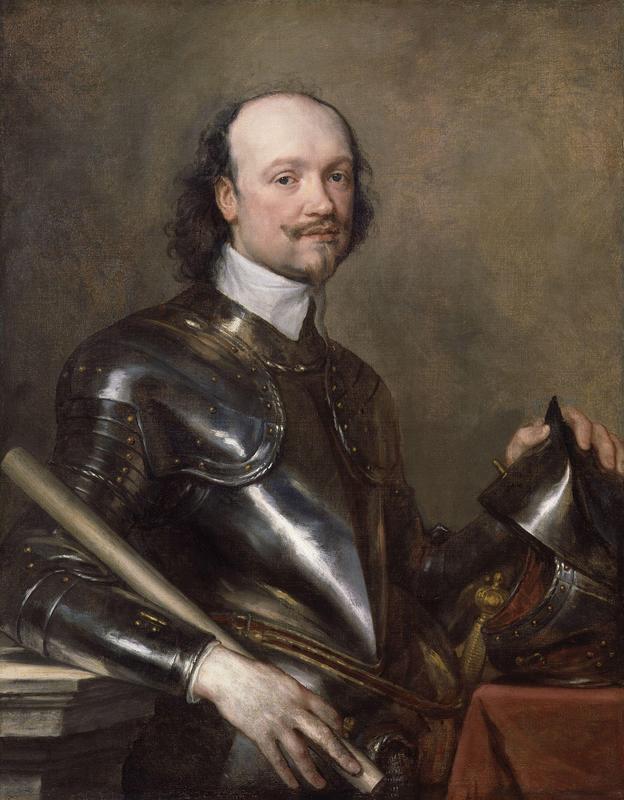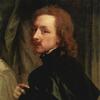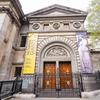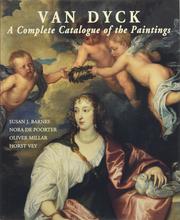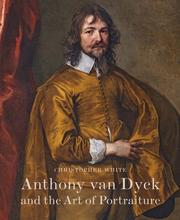More about Sir Kenelm Digby
- All
- Info
- Shop

Contributor
King Charles I sent Sir Kenelm Digby, the subject of the National Portrait Gallery's Sir Kenelm Digby, to Antwerp in order to invite Anthony van Dyck to lodge with his other artists at Blackfriars.
Most kings have a crib for concubines; Charles I loved art so much that he had one for artists. It must have had a few things in common with Warhol's factory.
Ben Jonson published an ode to Digby, titled "Underwood," the same year as Sir Kenelm Digby was painted:
"...he doth excel
in honor, courtesy,
and all the parts
court could call hers,
or man could call his arts"
Like courtier Baldassare Castiglione, Digby's career path was centered upon acting right around kings and princes. He used his bloodline to make friends with Thomas Hobbes and interview René Descartes, but Digby was more dandy than thinker.
Best pals van Dyck and Digby were a real "Asterix and Obelix" pair: "Beside the almost gigantic figure of Digby, stood the small form of Anthony van Dyck." Van Dyck dressed in his century's equivalent of Rick Owens, behaving more like a politician than a painter, and when his friends came over, it was like a king's court.
Of the van Dyck portraits, one shows Digby mourning, another, the Sir Kenelm Digby of our story, a third, with family. Aside from painting, when the two good friends hung out they studied their favorite "sciences," magic and astrology. (Sorry, metaphysics pals! You're scientists, I know!)
Digby wrote a vitriol-based recipe, because all the best recipes start with fine gourmet vitriol, for his homemade "Powder of Sympathy" which, when you applied it to the weapon that had wounded you, would magically cure your wound. It was, as you can imagine, unbelievably popular, and became part of a debate which continues to this day. Sympathetic magic is similar to homeopathy, still in use among communities in the U.S. and Germany, and an extremely controversial topic as it relates to public funds and research. Magician James Randi took entire bottles of homeopathic sleeping pills before lectures, and apparently remained awake, but large swathes of people still trust in homeopathy. "Sir Kenelm was no fool and I am not at all sure that there wasn't much excellent sense in his procedure," wrote Christopher Morley in 1923.
From its origins in Judaism, Catholicism still retains a formal text of prayer services and a faith in free will. In van Dyck's time, Protestantism had rejected a prayer liturgy and the idea of free will. This bothered Digby, who was a Catholic who once converted to Anglicanism, the state religion of England, and then back to Catholicism.
Digby's dad, Daddy Digby, was a noble convert to Catholicism who was caught for his part in the Gunpowder Plot. From his confinement in the infamous Tower of London, Sir Everard Digby wrote:
"Who's that which knocks? Oh stay, my Lord, I come:
I know that call, since first it made me know
Myself, which makes me now with joy to run
Lest he be gone that can my duty show."
No idea what it means, but it sounds good. Not good enough to set him free, of course, but good nonetheless.
Sources
- Fraser, Antonia. Gunpowder Plots: A Celebration of 400 Years of Bonfire Night. London: Penguin UK, 2005.
- Hearn, Karen. Van Dyck and Britain. London: Tate, 2009.
- McDonald, Paul S. Kenelm Digby's Two Treatises. Morrisville, NC: Lulu, 2013.
- Morley, Christopher. The Powder of Sympathy. New York: Doubleday, 1923.
- The National Gallery. The National Gallery of Pictures by the Great Masters Presented by Individuals, Or Perchosed by Grant of Parliament. London: Jones, 1820.
- Rubin, Davida. Sir Kenelm Digby, F.R.S., 1603-1665: A Bibliography Based on the Collection of K. Garth Huston, Sr., M.D. Novato, CA: Norman Publishing, 1991.
- Thomson, Katherine. Celebrated Friendships, Volume 1. London: James Hogg, 1861.

